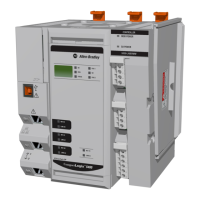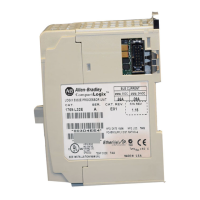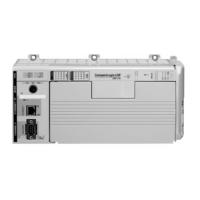192 Rockwell Automation Publication 5069-UM002A-EN-P - January 2019
Chapter 8 Develop Control Applications
Extended Properties
The Extended Properties feature lets you define more information, such as
limits, engineering units, or state identifiers for various components within the
controller project.
Pass-through behavior is the ability to assign extended properties at a higher
level of a structure or Add-On Instruction and have that extended property
automatically available for all members. Pass-through behavior is available for
descriptions, state identifiers, and engineering units and you can configure it.
Configure pass-through behavior on the Project tab of the Controller
Properties dialog box. If you choose not to show pass-through properties, only
extended properties that are configured for a given component are displayed.
Pass-through behavior is not available for limits. When an instance of a tag is
created, if limits are associated with the data type, the instance is copied.
Use the .@Min and .@Max syntax to define tags that have limits. There is no
indication in the tag browser that limits extended properties are defined for a
tag. If you try to use extended properties that have not been defined for a tag,
the editors show a visual indication and the routine does not verify. Visual
indicators include:
• A rung error in Ladder Logic.
• A verification error X in Function Block Diagrams.
• The error underlined in Structured Text.
You can access limit extended properties that the .@Min and .@Max syntax
defines. However, you cannot write to extended properties values in logic.
For more information on Extended Properties, see the Logix 5000 Controllers
I/O and Tag Data Programming Manual, publication
1756-PM004.
Component Extended Properties
Tag In the tag editor, add extended properties to a tag.
User-defined data type In the data type editor, add extended properties to data types.
Add-On Instructions In the properties that are associated with the Add-On Instruction definition,
add extended properties to Add-On Instructions.

